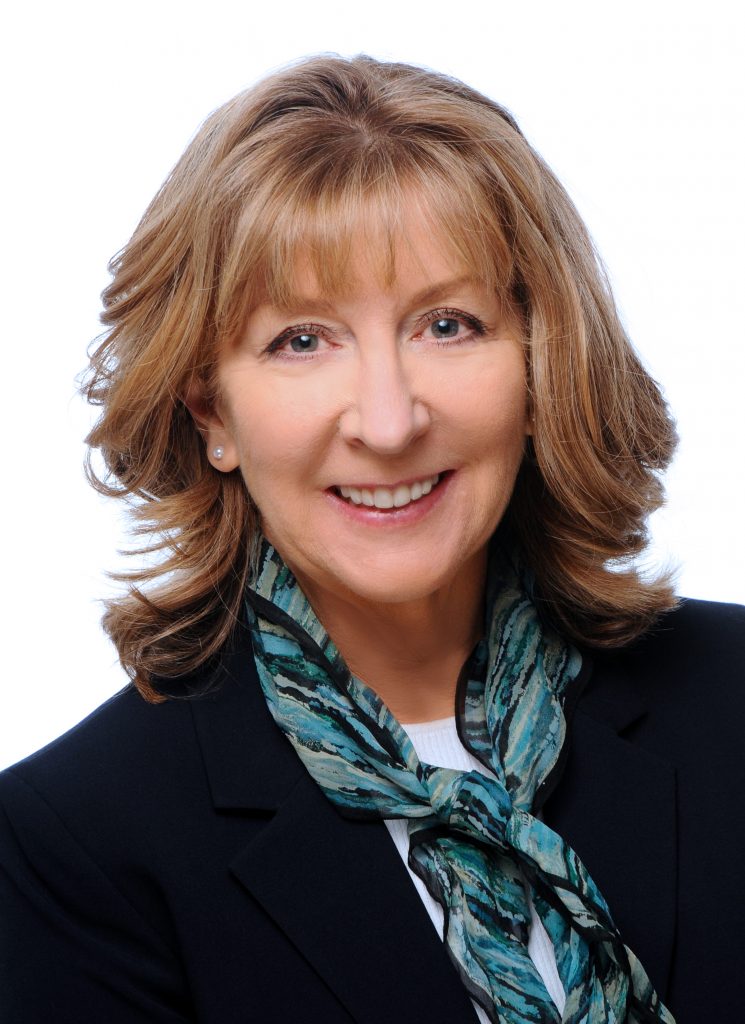A Primer on Specialty Drug Spend Under the Medical Benefit
by Sarah Martin, ASA, MAAA, FCA, CEBS, Vice President
What is medical pharmacy?
Every payor knows that specialty drug spend represents 40-50% of pharmacy plan costs, but some are unaware or unfamiliar with the specialty drug spend in the medical benefit. Some of the most expensive specialty drugs are professionally administered and processed through the medical benefit rather than the pharmacy benefit manager (PBM). These drugs are typically administered in a hospital, doctors office, outpatient clinic or through home infusion. The doctor or facility customarily purchases these drugs via a “buy and bill” process instead of through the plan’s specialty pharmacy via the PBM arrangement.
According to the Prime webinar, October 19, 2018, “Why the Drug Pipeline really Matters”, the average total drug spend across medical and pharmacy benefit is $130 PMPM. Approximately $100 PMPM is through the pharmacy benefit and the other $30 PMPM is through the medical benefit.
5% of members will have a claim under the medical pharmacy benefit (Source: 2016 commercial statistic, 2017 Magellan Medical Pharmacy Trend Report). The top drug categories include oncology, inflammatory, and immune globulin.
Data limitations with Jcodes
The medical benefit is often ignored or forgotten when plans evaluate their drug spend. One of the reasons medical pharmacy data is difficult to analyze is that claims are processed as Jcodes rather than NDCs (National Drug Code). A pharmacy Jcode does not provide as much information as an NDC code provides. An NDC code provides information on the manufacturer, product, strength and dose. This detail is not available in a Jcode record. Without information on the dose and strength, it is difficult to use a Jcode claim record to determine if that procedure was priced and billed correctly, much less dosed appropriately from a clinical perspective. Many health plans are attempting to capture more information as part of the billing process under the medical benefit. In 2017, only 61% of commercial health plans were capturing NDC data via the medical pharmacy benefit (2017 Magellan Medical Pharmacy Trend Report). Because of the lack of specific information on each claim, billing errors are not uncommon. In addition, there is little to no visibility into any rebates that may be available or collected on medical pharmacy claims.
Strategies to manage medical pharmacy spend
Despite the difficulties associated with the data, an investigation of the data available in the medical pharmacy Jcodes can still help in identifying savings opportunities. Savings opportunities are available through two management strategies: channel management (PBM vs. medical channel), and site of care management (outpatient hospital vs. doctor’s office vs. home infusion).
Channel management: Some professionally administered drugs can be processed through either channel—the pharmacy benefit, specifically the PBM’s specialty pharmacy, or the medical benefit where the pricing is based on the provider’s charge for that drug. In many cases, moving the drug to the PBM specialty pharmacy can result in significant savings. This analysis needs to be conducted on a case-by-case basis, as it will vary by drug and by provider. For example, Spinraza which is a professionally administered drug, can be billed through the medical benefit or the pharmacy benefit, and we see both in our book of business. The lowest price channel varies depending on the medical carrier, the PBM, and the client’s PBM contract. As another example, a carrier may have negotiated special pharmacy pricing with a particular facility on particular drugs, so it may not make sense to move those drugs to the PBM channel.
Site of care management: Within the medical channel, a drug can be administered in a variety of setting including the outpatient hospital, physician office, or home infusion. The goal of site of care management is to find the most appropriate site of care for a particular member and drug based on clinical and financial considerations. Even if the physician’s office or home infusion are less expensive than the outpatient hospital, a patient may need to remain in the hospital setting for clinical reasons. The availability and proximity of alternative sites of care must be taken into consideration, especially for members in rural locations whose only option may be the outpatient hospital setting. Despite these challenges, significant savings can be achieved by reviewing the site of care for top drugs in your medical plan. A study conducted by The Moran Company (“Hospital Charges and Reimbursements for Medicines: Analysis of Cost-to-Charge Ratios”, September 2018) indicates that 83% of hospitals charge payors more than double their acquisition cost for a drug. One drug that is often more expensive through the outpatient hospital is Remicade. Remicade is the #1 drug by total plan spend for commercial plans, and it is often successfully moved from the outpatient hospital setting to a physician office setting resulting in significant savings, sometimes up to $5,000 per procedure.
Medical pharmacy in the pipeline
Channel management and site of care management will become increasingly important as precision medicine progresses. Genetic therapies and many other specialty drugs in the pipeline are expected to be professionally administered, thus likely to process through the medical benefit.
Here are a few examples of drugs in the pipeline that will most likely process through the medical benefit:
- Lisocabtagene maraleucel CAR-T therapy for a particular type of lymphoma, expected cost of $300,000 per treatment, expected approval in late 2018 or early 2019
- AVXS 101 which is a gene therapy for Spinal Muscular Atrophy, expected cost of $700,000 to $1,000,000+ for the one time infusion, expected approval in first half of 2019
- Golodirsen for Duchene Muscular Dystrophy, expected cost of $300,000+, expected approval in second half of 2019
For more insight into the pharmacy spend within your medical benefit, reach out to your Excelsior Solutions consultant.

Sarah Martin, ASA, MAAA, FCA, CEBS
Vice President
Sarah has been in employee benefits for 12 years. She is a credentialed actuary responsible for clients’ financial deliverables and strategy. Sarah has been a guest speaker for the Conference of Consulting Actuaries, the Pharmacy Benefit Management Institute, and the International Society of Certified Employee Benefits Specialists.
Her primary areas of expertise include pharmacy benefit management procurement and contracting, cost forecasting, data analysis, plan design, predictive modeling, and emerging pharmacy benefit strategies.
What Do You Need to Know About Rare Disease and Orphan Drugs?
byBarb Hawes, RPh, MBA, Vice President
What is a rare disease?
There is no universal definition for rare disease, but currently the US has set the threshold at 7.5 per 10,000 people or as affecting fewer than 200,000 people in the US. Some rare diseases, like Cystic Fibrosis and Multiple Sclerosis are more common than other rare diseases. Approximately 50% of all people fighting over 100 different types of cancer are battling a rare cancer. With over 7,000 known rare diseases, it affects a total of 30 million Americans (roughly equal to the number with diabetes). In aggregate, cases of rare disease are not that rare. However, individually, rare disease is very difficult for most patients. The vast majority spend many years and visit many physicians before getting an accurate diagnosis and viable treatment plan. The process is frustrating, isolating and expensive. While over 7,000 rare diseases exist, less than 500 (only 5%) have FDA-approved
treatments. And prior to 1983, treatment options were far fewer.
What is an orphan drug?
The Orphan Drug act was passed in 1983 to drive innovation to develop treatments for conditions, where “there is no reasonable expectation that the cost of developing a drug would be recovered from sales in the US.” The Orphan Drug Act is considered successful in its mission as pharmaceutical companies have responded with new options while taking advantage of the tax incentives, waivers of fees, and extended patent protection under the law.
Many of the new innovations have come with very large price tags attached and debate is starting regarding potential abuse of the program. The 10 most expensive drugs in the world are orphan drugs. Orphan drug sales are expected to climb by 11% a year through 2024 – nearly double the rate of the overall market during the same time period. The cost impact to a plan treating one or more members with a rare disease can be crippling. According to Evaluate Pharma, the mean cost to treat a patient in 2017 with an orphan drug was over $147K compared to a mean cost of $31K per patient per year for non-orphan drug treatment. These are the drugs that make big headlines-like Luxterna at $800K for one-time treatment on a specific form of blindness or Yescarta at $450K for treatment of cancer.
What can you do about it?
Now that these kinds of drugs and price tags are becoming more prevalent, it is important for you to be prepared to have these types of patients in your population. Excelsior Solutions’ Specialty Pipeline Predictor report can help identify patients that may be eligible for new orphan drugs coming to market. These patients need support from diagnosis, to finding physicians, second-opinions, treatments, support groups, financial assistance and more. Some health plans and PBMs (pharmacy benefit managers) are beginning to offer programs to support and manage these rare diseases. Programs range from prior authorization, precertification, site of care consulting to stop-loss tracking and more. Excelsior Solutions’ clinical consulting team has helped clients save millions of dollars in certain orphan drugs through strategies such as site of care. Now is an important time to plan for the future.
Be sure to talk to your Excelsior Solutions advisor and your health plan partners to make sure you are prepared for rare disease in your population.

Barb Hawes, RPh, MBA
Vice President
Barbara has over 20 years of experience in the pharmacy industry. Barbara earned her master’s degree in business administration from DePaul University and a bachelor’s degree in pharmacy from Purdue University. Additionally, Barbara is a registered pharmacist in the states of Indiana, Illinois and Georgia and is an active member of the Academy of Managed Care Pharmacy.
Disposing of Medicines Once Their Need Has Passed
by Robert Kordella, RPh, MBA, Chief Clinical Officer
Our pharmacy benefits consulting practice mission is focused on making sure that every dollar spent on the pharmacy benefit is spent wisely, ensuring that beneficiaries are protected from unintended clinical risk, and helping our clients anticipate and plan for the impact of new medications.
Part of that mission is to ensure clients and their beneficiaries understand the importance of getting medicines out of their homes once the need for them has passed. The opioid crisis and studies show that experimentation with unused medicine cabinet supplies often lead to larger problems with opioids. Removal of unused medications from the home is an important task, not just for opioids, but for all medications that are no longer needed.
There are three common methods to touch on briefly. They are:
Medicine take-back options
Disposal in the household trash using household items
Medicine disposal products
Medicine take-back options
The US Drug Enforcement Administration (“DEA”) periodically sponsors drug take-back days in conjunction with local law enforcement across the country. More information can be obtained at https://takebackday.dea.gov. In addition, there are permanent collection sites, authorized and registered with the DEA, which safely and securely collect and dispose of medicines year-round. These facilities are often located in local pharmacies, hospitals, and law enforcement locations. To find a permanent collection site near you go to https://apps.deadiversion.usdoj.gov/pubdispsearch/spring/main?execution=e1s1.
Disposal in the household trash using household items
If no take-back options are available in your area, you can follow these simple steps to safely dispose of most medicines using commonly available household items:
Mix medicines (do not crush) with an unpalatable substance such as dirt, cat litter, or used coffee grounds in a sealable plastic bag;
Place the sealed bag in your household trash;
Delete, obscure, or otherwise remove all personal information from the empty prescription container and dispose of it separately in your household trash
Medicine disposal products
There are several firms that market medicine disposal products designed for consumer use. Each is provided in either a bottle or a pouch, with water being added to most of the products. As with disposal using household products, the resulting mixture is shaken and then disposed of in the regular household trash. Among the companies currently marketing such products are, Deterra®, DisposeRx™, Drug Buster®, Element® MDS, Pill Catcher™, Pill Terminator, and Rx Destroyer™. Each of them has a website that describes their products and technology in greater detail. Of note, none of the medicine disposal products are approved by the DEA, the Environmental Protection Agency, or any other federal agency, which do not evaluate or endorse such products.
Summary
Removing medications that are no longer needed from homes, by whatever method is most convenient, is a critical component of the pharmacy benefit that ought to be communicated to beneficiaries and their dependents.

Robert Kordella, RPh, MBA
Chief Clinical Officer
Bob has more than 30 years of diverse experience in the pharmacy industry. Over the course of his career, Bob has led clinical and PBM operations teams in successfully managing more than $4 billion in annual drug spend. This was also while limiting per-member-per-year spending growth to levels that have simultaneously drawn industry acclaim and consistently high levels of member and payer satisfaction.
